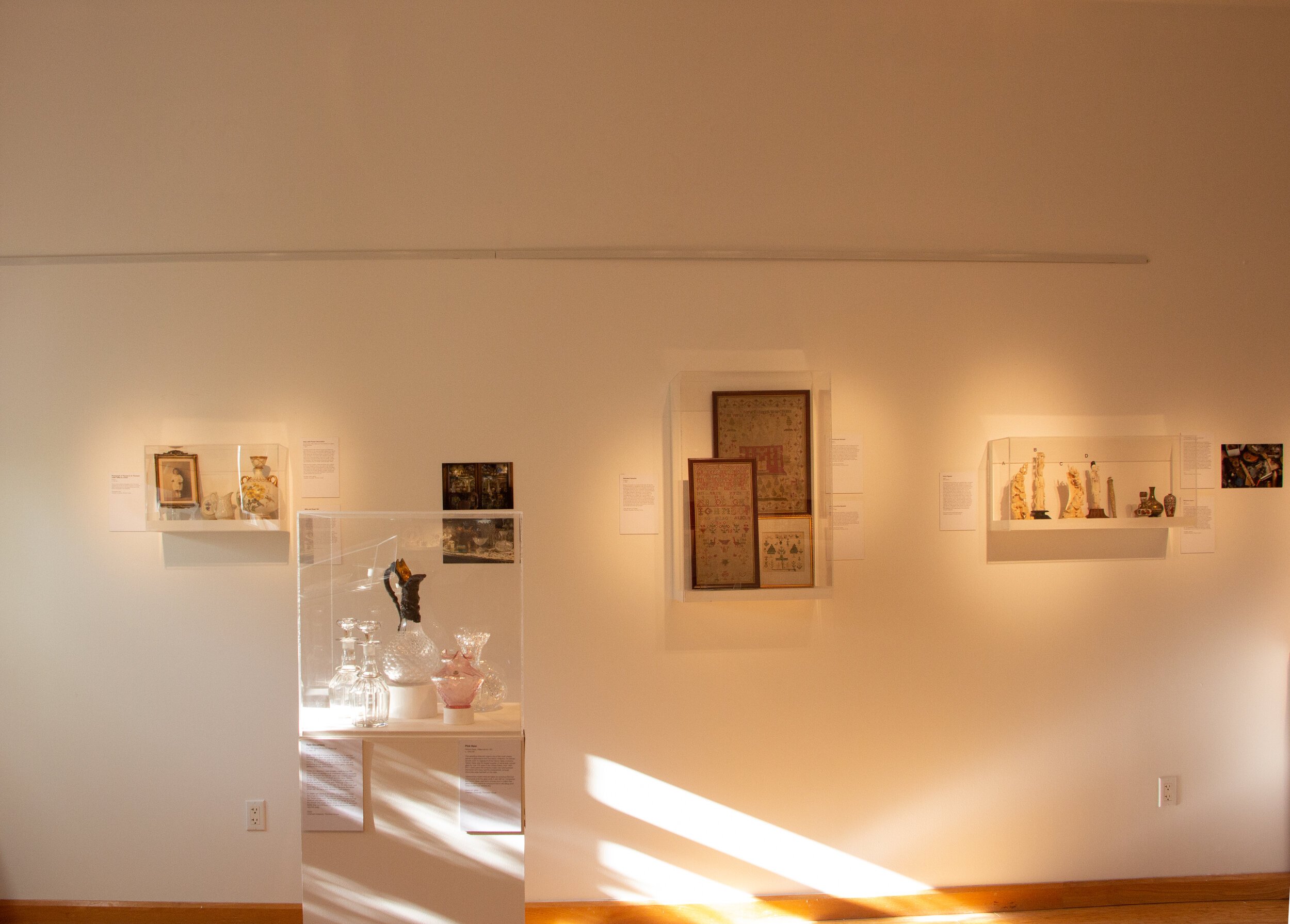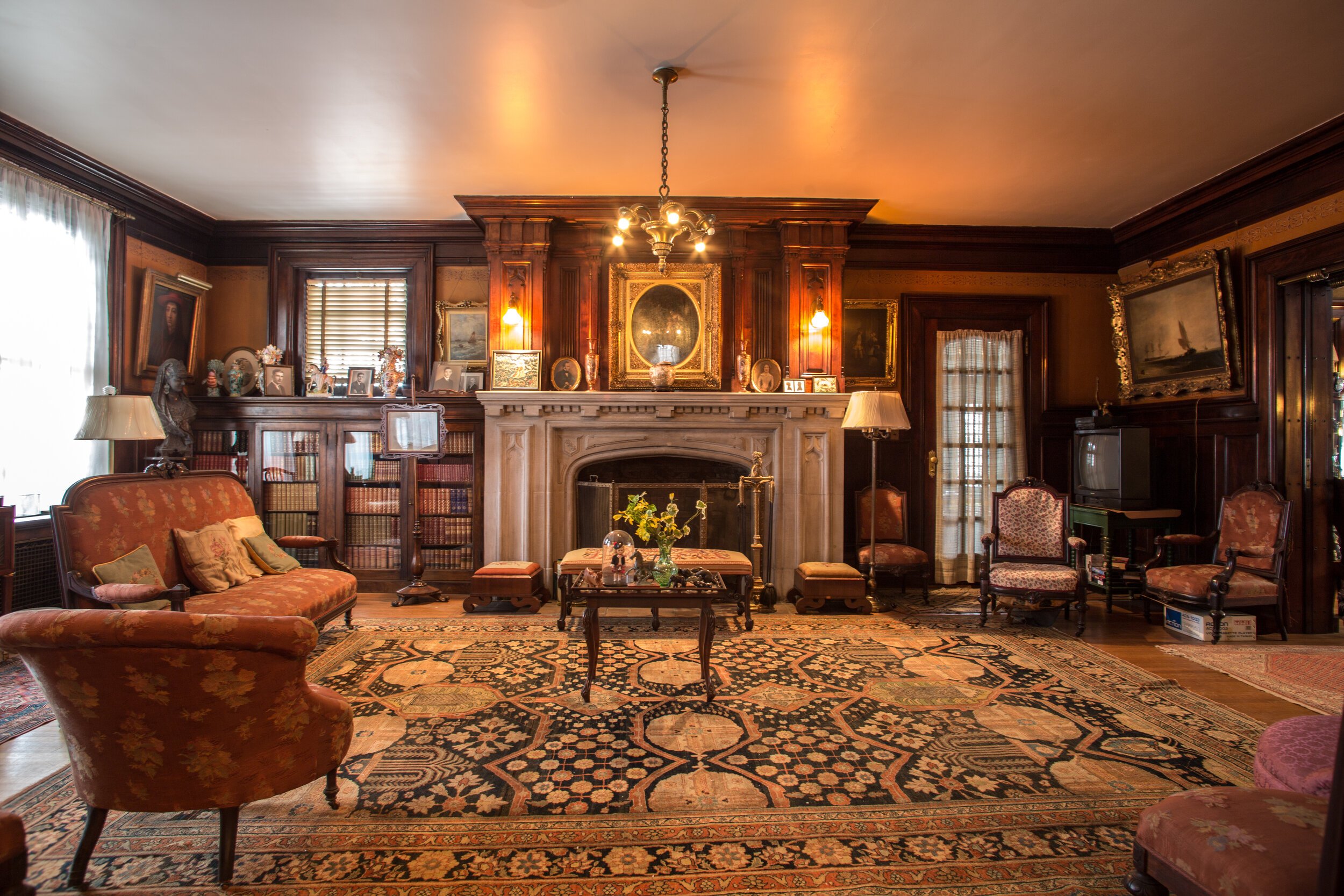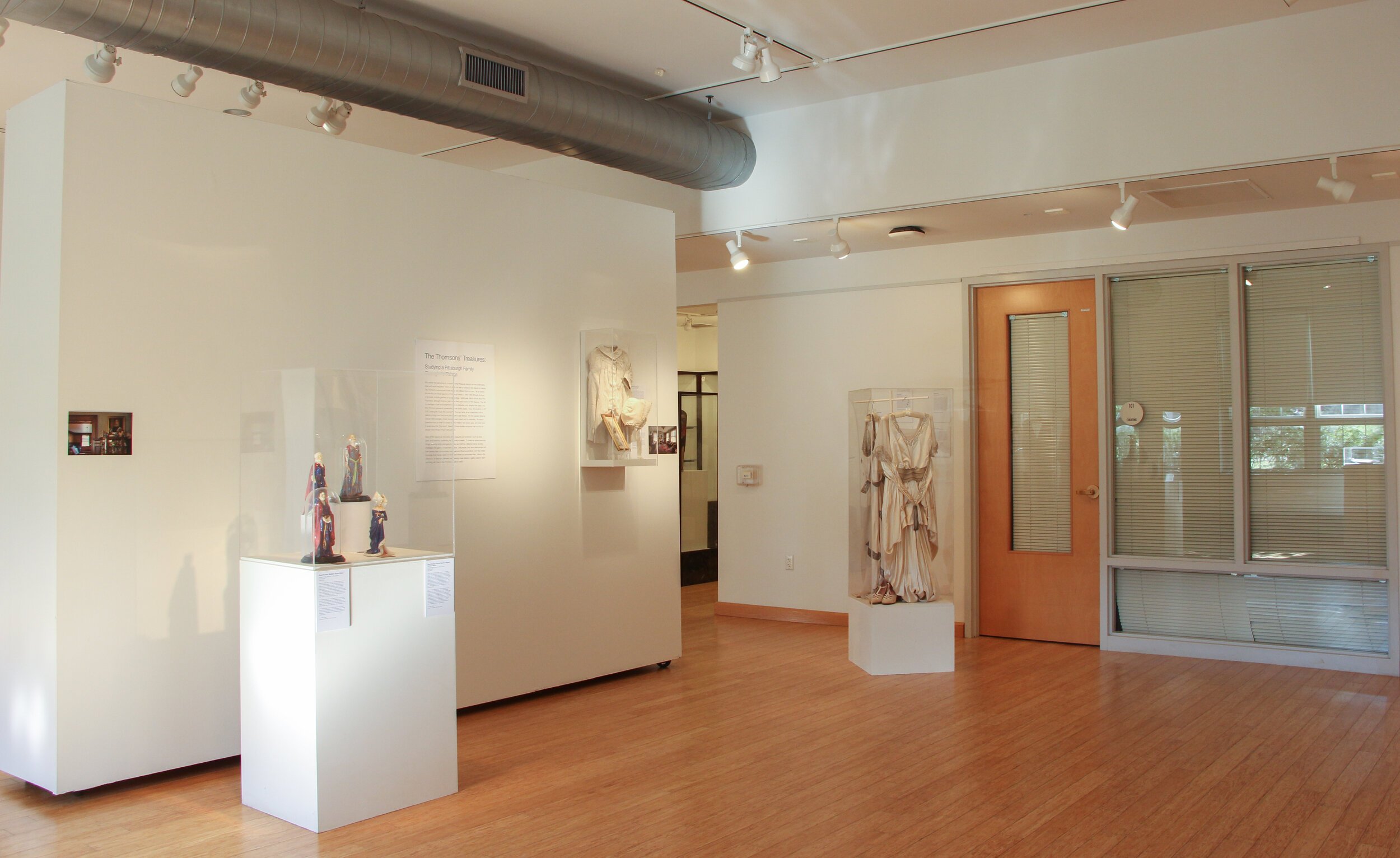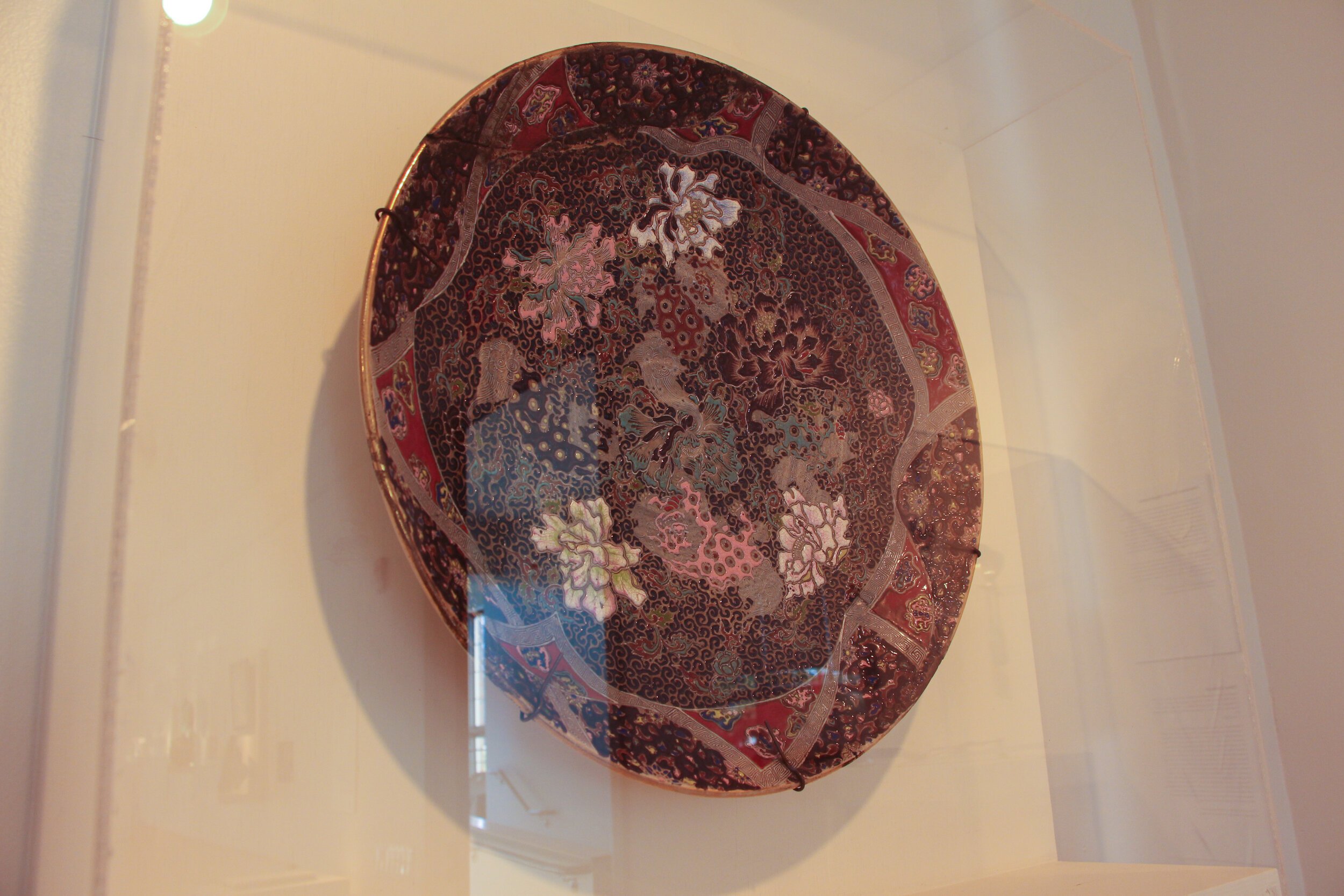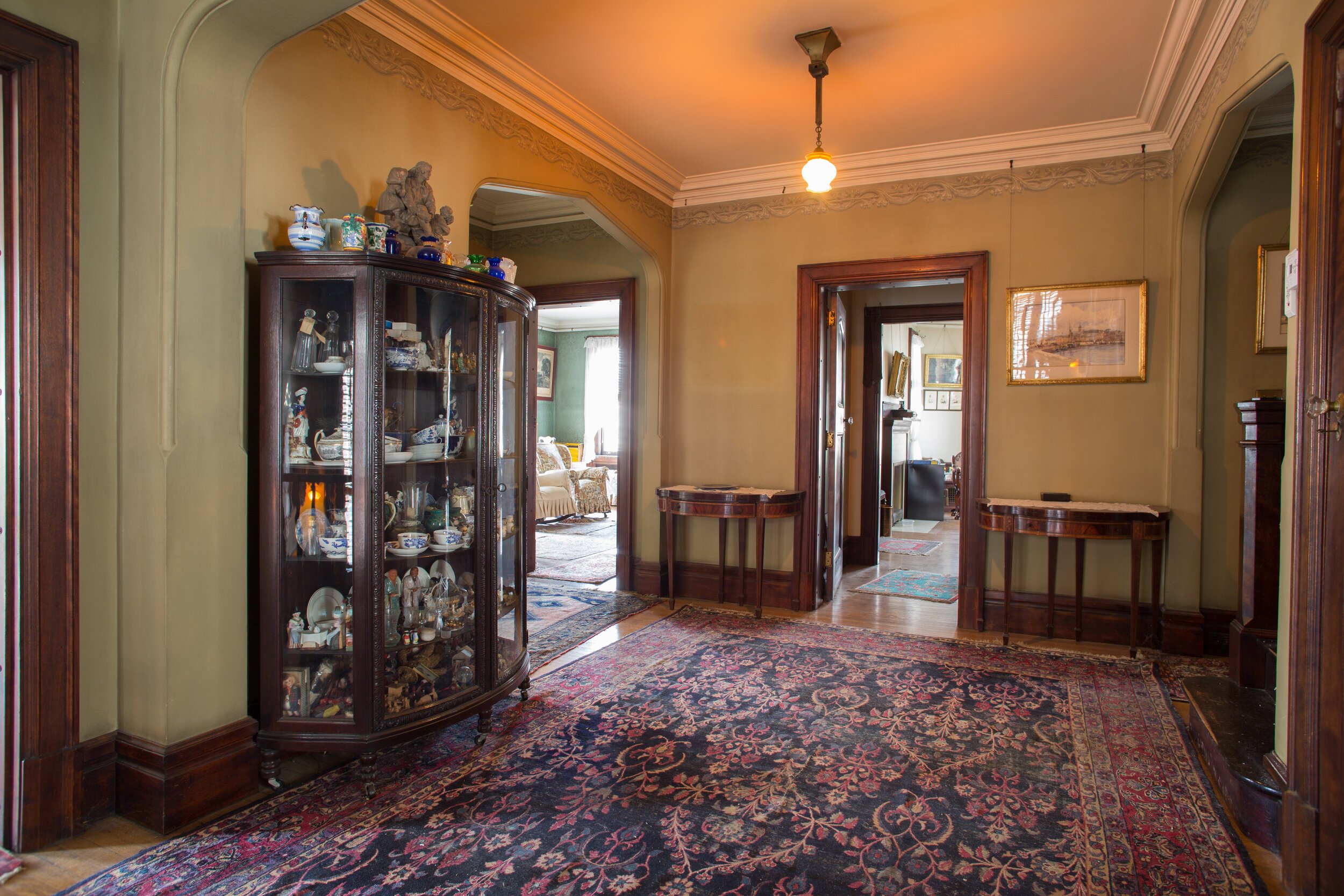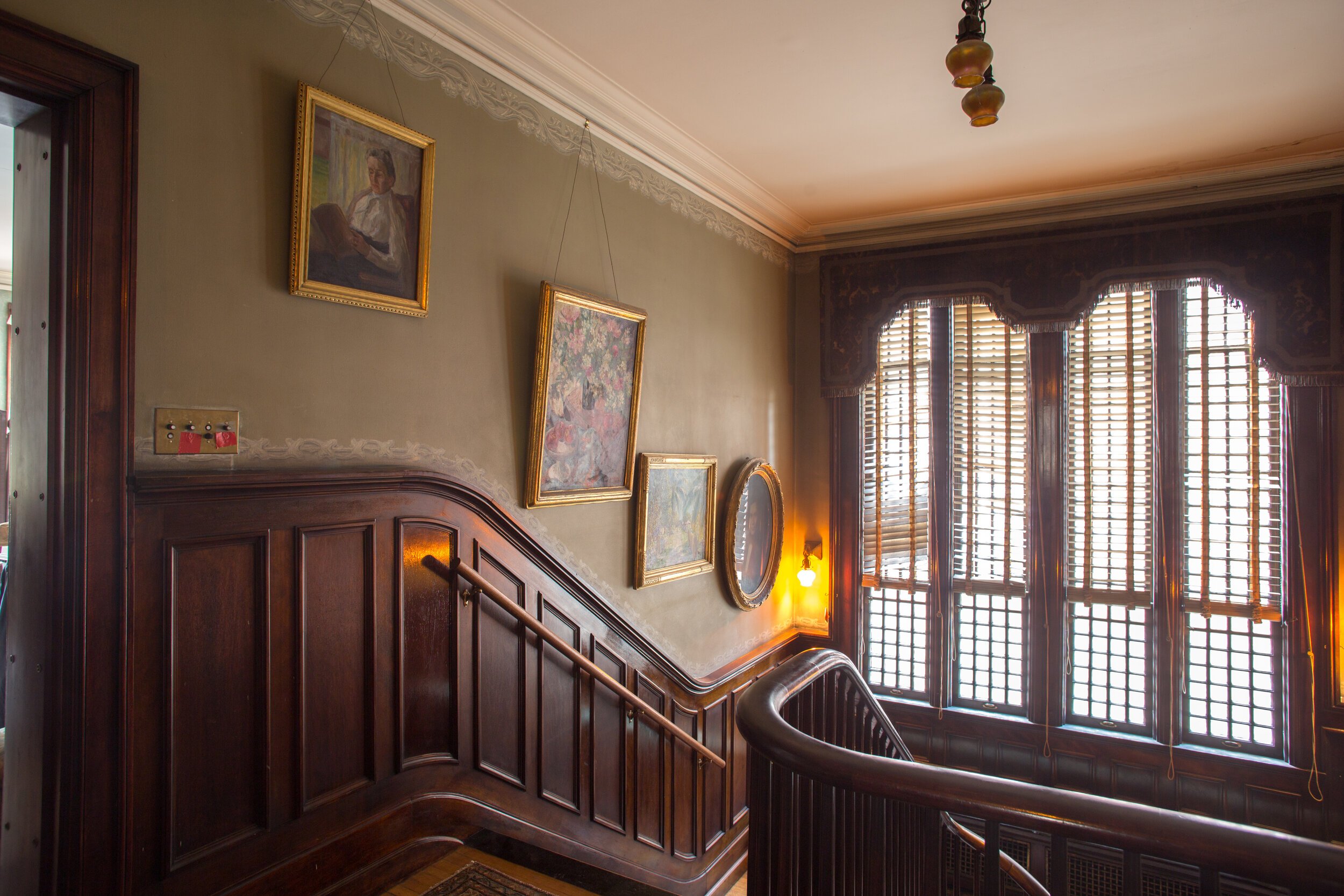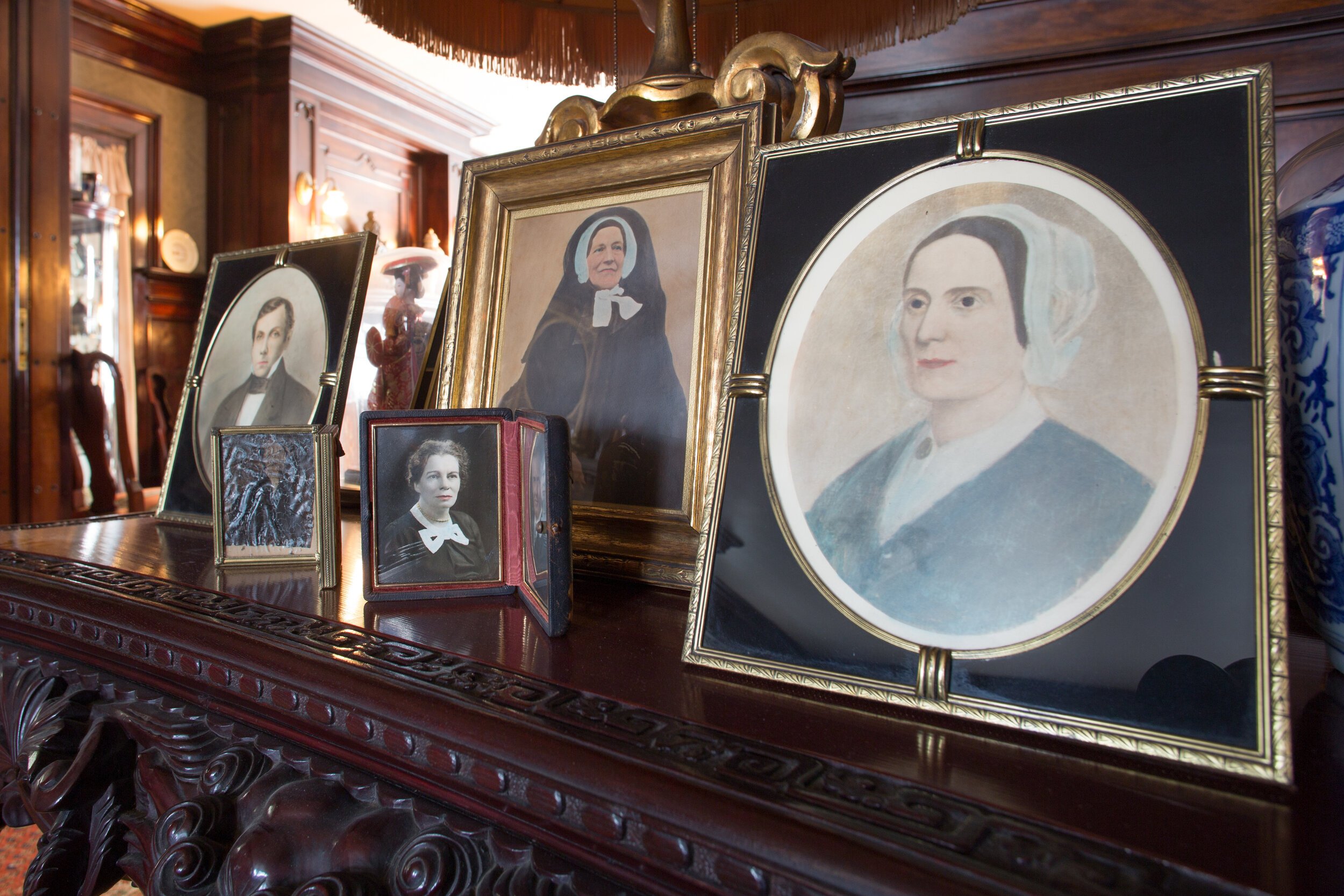Students Curate New “Thomsons’ Treasures” Exhibit
It isn’t every day that students in their undergrad get hands-on experience in the world of curation. Luckily, the Fall 2020 course Curating the Visual Arts taught by Dr. Roark isn’t an everyday college class! Step into the Susan B. Gurrentz ‘56 Art Gallery this spring to view the student-curated display The Thomsons’ Treasures: Studying a Pittsburgh Family through its Things. The exhibit features objects from Chatham’s Thomson House, the grand home at Woodland and Fifth Avenue that was bequeathed to the University in 2015, and examines the Thomson family through their belongings.
We spoke with four students to learn a bit more about the exhibit, their experiences, and what they learned from this unique opportunity.
Megan Shostek, Arts Management ‘21
(she/her/hers)
“In Curating the Visual Arts, we studied a breadth of knowledge about curating in general and the implications of that in today’s world. We then delved into a material culture focus with curating and that’s where the Thomson House exhibition came in. We had a wide selection of objects that we could choose from, each student chose what interested them.
It was really a full-circle experience for us, we picked the object, we cleaned it, we did our own research, and wrote labels. By the end of it, I felt personally connected to my objects and I feel like I know so much about them now.
I would recommend this course to anyone who wants to know what curating is because it gives you a lot of perspective on the actuality of the practice and everything it encompasses.”
Sophie Barner, Visual Arts/Art History & Studio Arts ‘21
(she/her/hers)
“As a class, we all had an equal hand in this exhibition. I think one of the biggest learning curves was working with decorative arts in general. I think we’re all used to talking about fine art and not material objects. We got to meet with the decorative arts curator from the Carnegie and that was super helpful and insightful. We learned that this type of curation involves a lot of research to delve into what these objects were.
My dream career is to be a curator and this experience opened my eyes to the possibility of doing decorative arts.
The best part of this exhibition was when we put it together because we had 10 people working on it at the same time each with their own section and it was a great feeling to see it all come together. It’s rewarding to be able to physically point at the work you’ve done in a class and show it to others at the end.”
Emily Wagner, Arts Management ‘23
(she/her/hers)
“Something this class taught me about myself is how much I like researching. I had five objects total that I worked on for the exhibition. I had a vase, a photograph, a cup and saucer, and a large platter that you will see right as you walk into the gallery. Most of my objects did not have a lot out there about what they were or who made them, so it was a fun scavenger hunt of sorts. The platter specifically had no details or markings on it that told me what it was so when I finally found out, I was overjoyed!
I think a lot of people have this misconception that museums are cold and heartless. Working on this project, you’re constantly reminded that these were someone's personal objects and should be treated as such. The platter, for example, may have hung in the dining room as a treasured family object.
Now, even though the objects are in glass cases and look old and distant, they have their own stories. It showed me how this entire profession is very much human and alive.”
Jessica Ham, Arts Management ‘21
(she/her/hers)
“I chose Scottish samplers, which were panels of needlework for my objects. I did research to find out what they were used for, why they were made, and why Mrs. Thomson would have collected them as she was really the curator of the objects in the home. I found that the samplers were made by 13-year-old girls in the 15th century in Scotland to promote their education and act as a resume for their marriage.
It was really interesting to learn about people from another time and culture that probably wouldn’t have been recognized if it weren’t for collectors such as Mrs. Thomson.
I had never curated anything before, so it was a really good learning experience on how to curate a small exhibition. Curating is my goal in my career, so this course was highly relevant to me. I’ll probably use this exhibition as an example for grad schools and internship opportunities. I highly recommend this class to anyone interested in the realm of museum studies.”
The Susan B. Gurrentz ‘56 Art Gallery is located in Woodland Hall next to Café Rachel and is open to the public weekdays from 12 pm- 6 pm. Can’t make it in-person? Check out some photos from the exhibit and Thomson house below!





